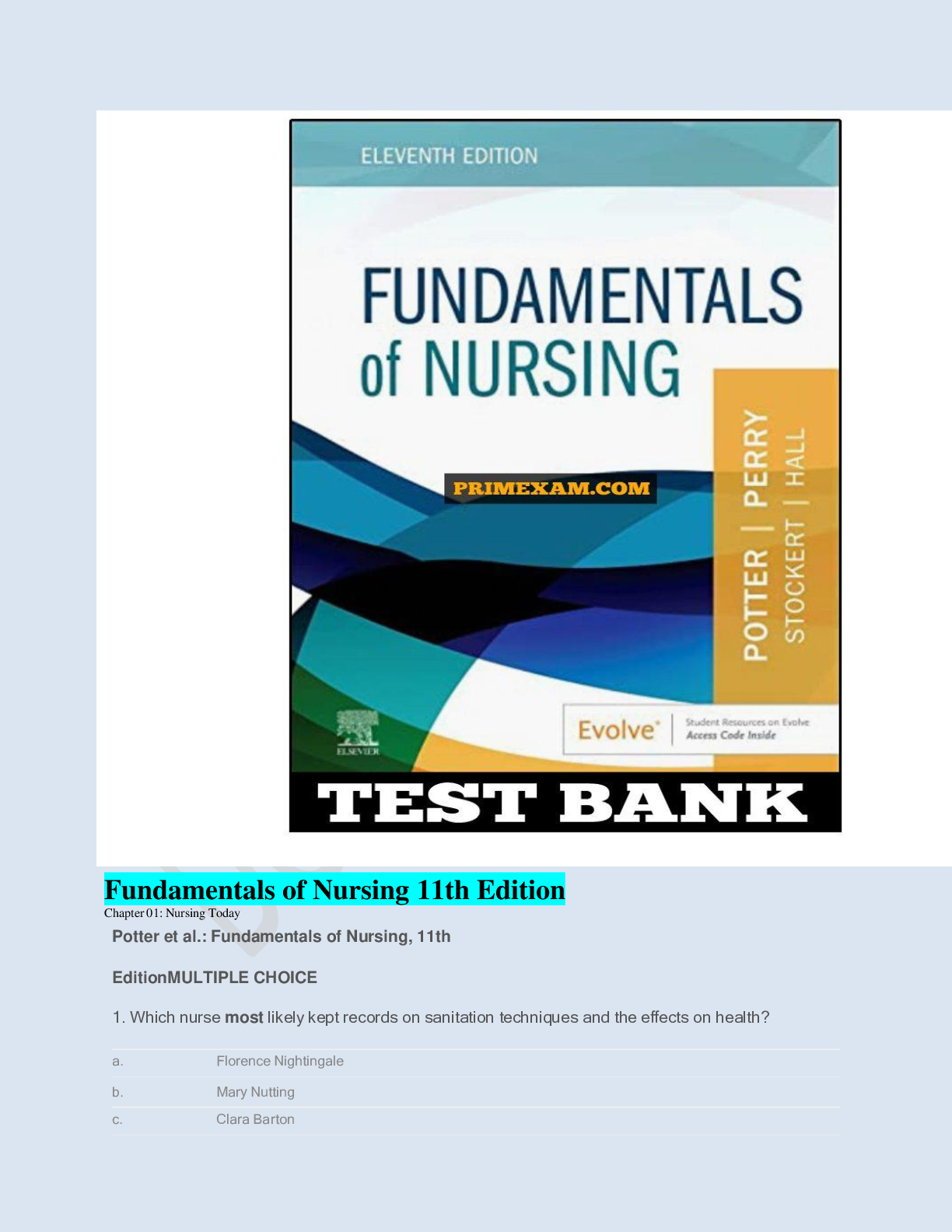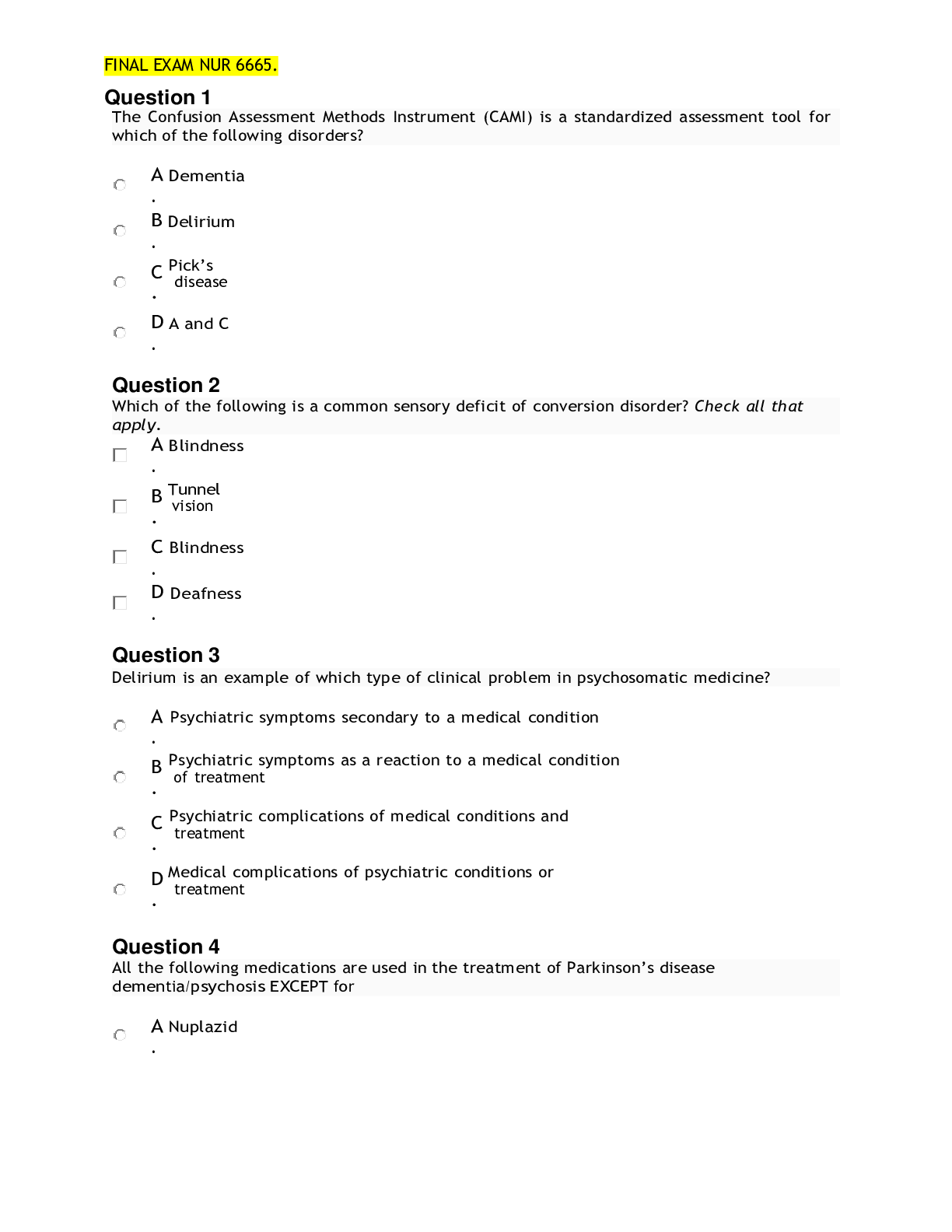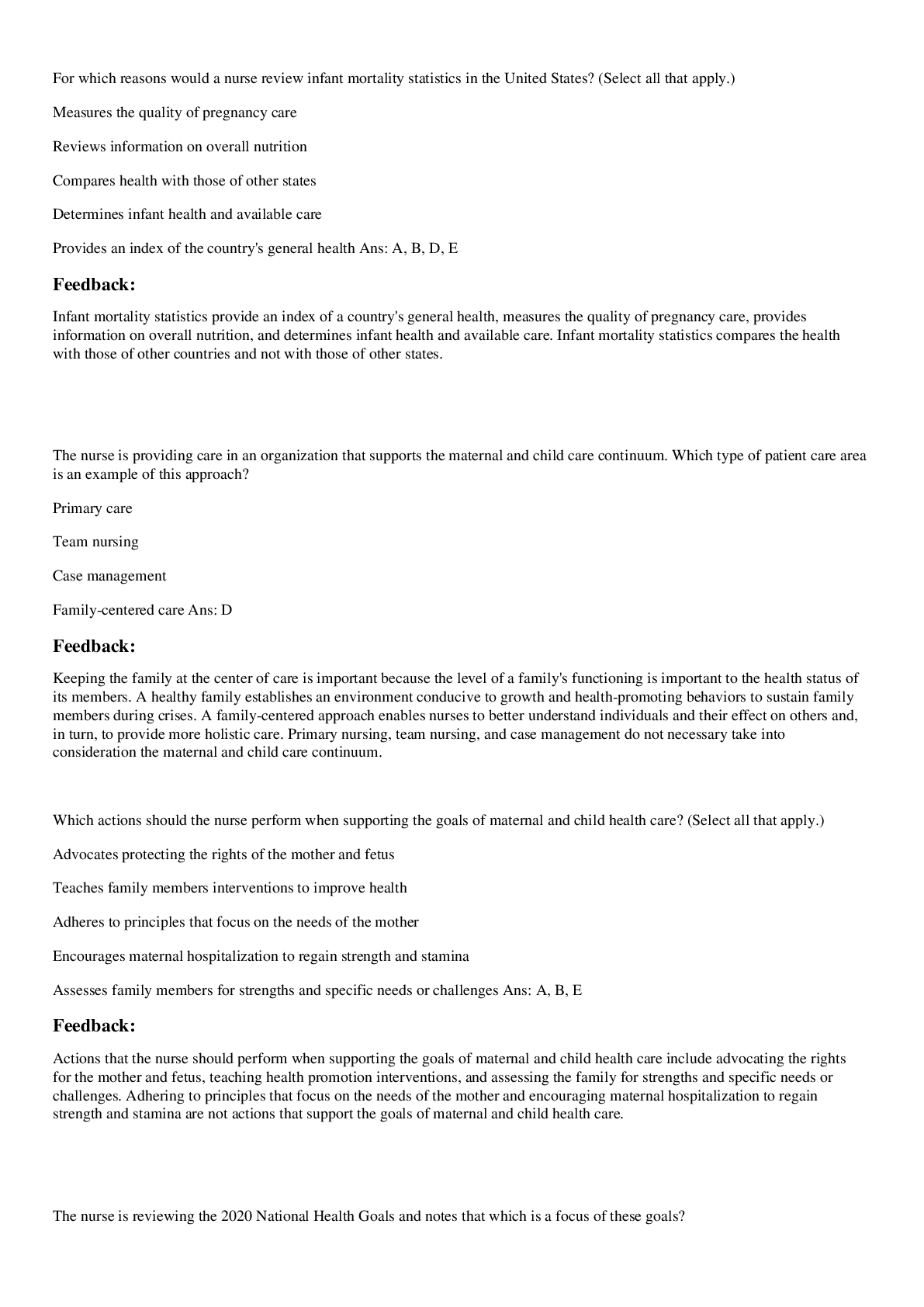*NURSING > TEST BANKS > Maternal & Child Health Nursing: Care of the Childbearing & Childrearing Family 8th Edition Test Ban (All)
Maternal & Child Health Nursing: Care of the Childbearing & Childrearing Family 8th Edition Test Bank
Document Content and Description Below
Maternal & Child Health Nursing: Care of the Childbearing & Childrearing Family 8th Edition Test Bank 1. A client, now 37 weeks pregnant, calls the clinic because she's concerned about being short... of breath and is unable to sleep unless she places three pillows under her head. After listening to the client's concerns, the nurse should take which action? a. Make an appointment because the dent needs to be evaluated. b. Explain that these are expected problems for the latter stages of pregnancy. c. Arrange for the dent to be admitted to the birth center and prepare for birth. d. Tell the client to go to the hospital; she may be experiencing signs of heart failure. RATIONALE: The nurse must distinguish between normal physiologic complaints of the latter stages of pregnancy and those that need referral to the health care provider. In this case, the client indicates normal physiologic changes caused by the growing uterus and pressure on the diaphragm. These signs don't indicate heart failure. The client doesn't need to be seen or admitted to the birth center. Reference: Maternal & Child Health Nursing: Care of the Childbearing and Childrearing Family, 5th ed. Philadelphia: Lippincott Williams & Wilkins, 2007, p. 230. 2. During the first trimester, a nurse evaluates a pregnant client for factors that suggest she might abuse a child. Which parental characteristic is of most concern to the nurse? a. The client didn’t graduate high school. b. The client states she is stupid and ugly. c. The client is carrying twins. The client eats fast food every day. RATIONALE: Typically, the abusive parent has low self-esteem, which may be evident by self- deprecating statements, and many unmet needs. Lack of nurturing experience and inadequate knowledge of childhood growth and development may also contribute to the potential for child abuse. A low educational level, multiple gestations, and poor diet aren't direct risk factors for committing child abuse. REFERENCE: Pillitteri, A. Maternal & Child Health Nursing: Care of the Childbearing and Childrearing Family, 5th ed. Philadelphia: Lippincott Williams & Wilkins, 2007, p. 1743. 3. A client in her 15th week of pregnancy has presented with abdominal cramping and vaginal bleeding for the past 8 hours. She has passed several clots. What is the primary nursing diagnosis for this client? a. Deficient knowledge of pregnancy b. Deficient fluid volume c. Anticipatory grieving d. Acute pain RATIONALE: If bleeding and clots are excessive, this client may become hypovolemic , leading to a nursing diagnosis of Deficient fluid volume. Although Deficient knowledge (pregnancy), Anticipatory grieving, and Acute pain are applicable to this client, they aren't the primary diagnosis REFERENCE: Pillitteri, A. Maternal & Child Health Nursing: Care of the Childbearing and Childrearing Family 5th ed. Philadelphia: Lippincott Williams & Wilkins, 2007, p. 400. 4. A nurse is obtaining a prenatal history from a client who's 8 weeks pregnant. To help determine whether the client is at risk for a TORCH infection , the nurse should ask: a. “Have you ever had osteomyelitis?” b. “Do you have any cats at home? c. “Do you have any birds at home?’ d. “Have you recently had a rubeola vaccination?” RATIONALE: Toxoplasmosis, Other Rubella virus, Cytomegalovirus, and Herpes simplex virus and agents that may infect the fetus or neonate, causing numerous ill effects. Toxoplasmosis is transmitted to humans through contact with the feces of infected cats (which may occur when emptying a litter box), through ingesting raw meat, or through contact with raw meat followed by improper hand washing. Osteomyelitis , a serious bone infection; histoplasmosis, which can be transmitted by birds; and rubeola aren't TORCH infections REFERENCE: Pillitteri, A. Maternal & Child Health Nursing: Care of the Childbearing and Childrearing Family, 5th ed. Philadelphia: Lippincott Williams & Wilkins, 2007, p. 288. 5. A client, 38 weeks pregnant, arrives in the emergency department complaining of contractions. To help confirm that she's in true labor, the nurse should assess for: a. irregular contractions. b. increased fetal movement. c. changes in cervical effacement and dilation atter 1 to 2 hours. d. contractions that feel like pressure in the abdomen and qroin. [Show More]
Last updated: 2 years ago
Preview 1 out of 23 pages

Buy this document to get the full access instantly
Instant Download Access after purchase
Buy NowInstant download
We Accept:

Reviews( 0 )
$10.00
Can't find what you want? Try our AI powered Search
Document information
Connected school, study & course
About the document
Uploaded On
Mar 02, 2022
Number of pages
23
Written in
Additional information
This document has been written for:
Uploaded
Mar 02, 2022
Downloads
0
Views
86












